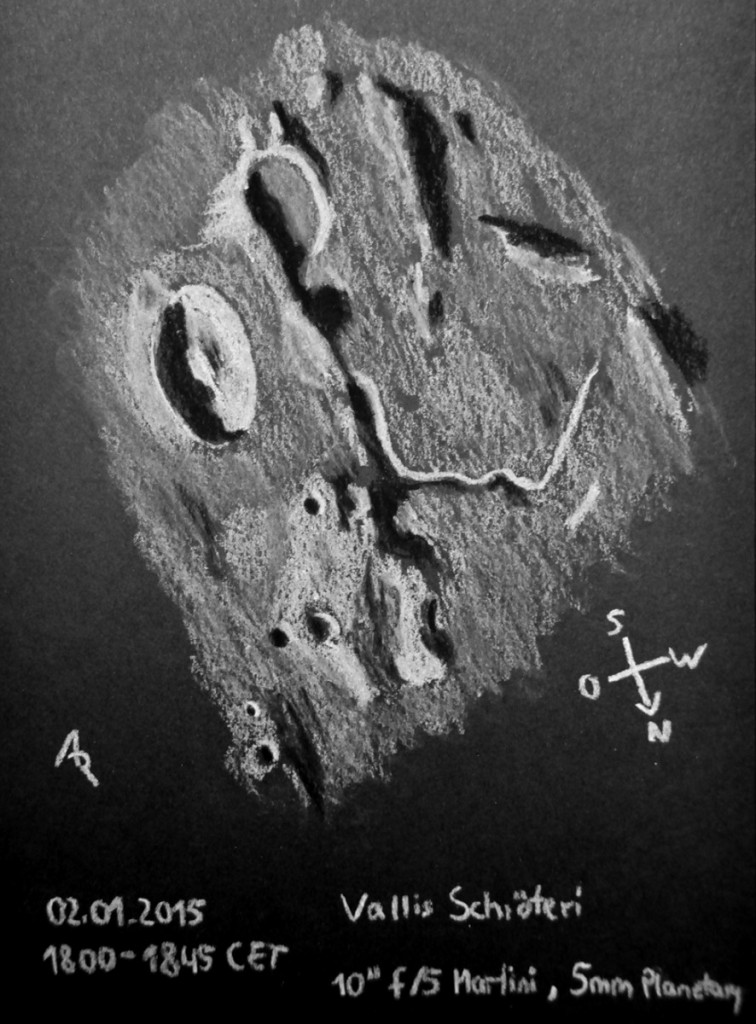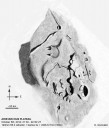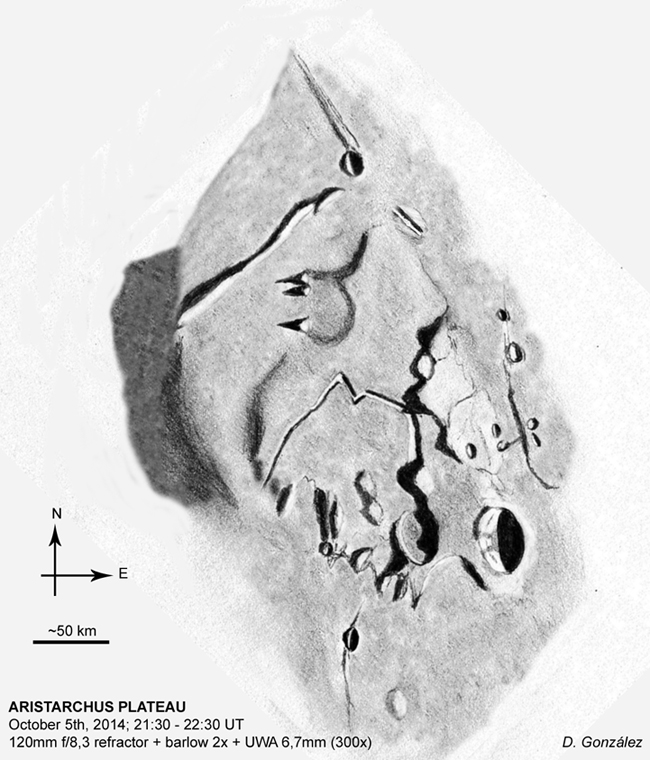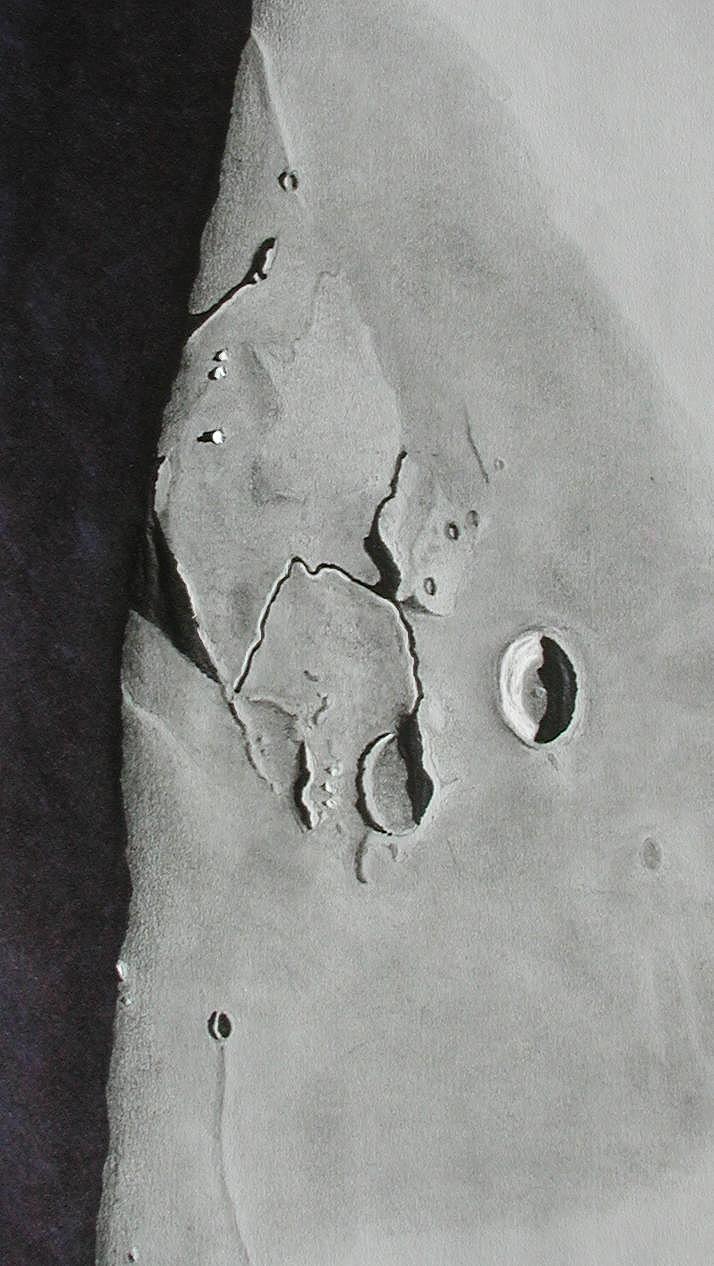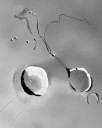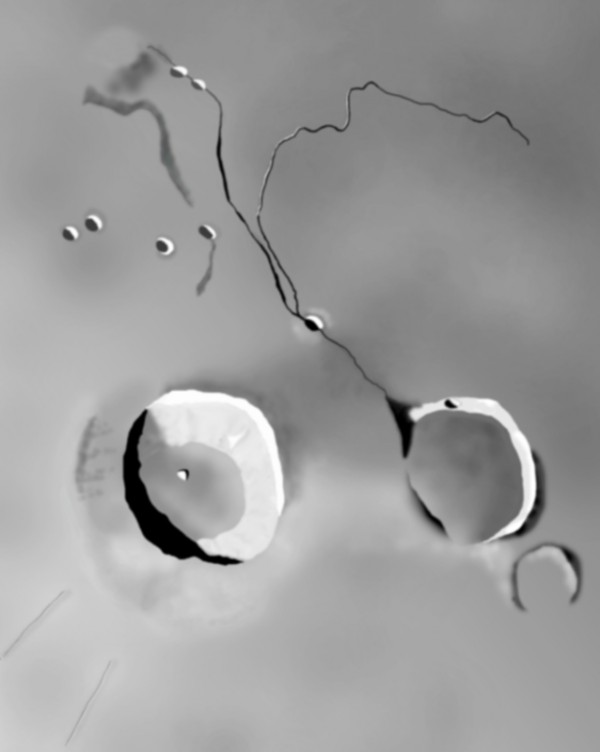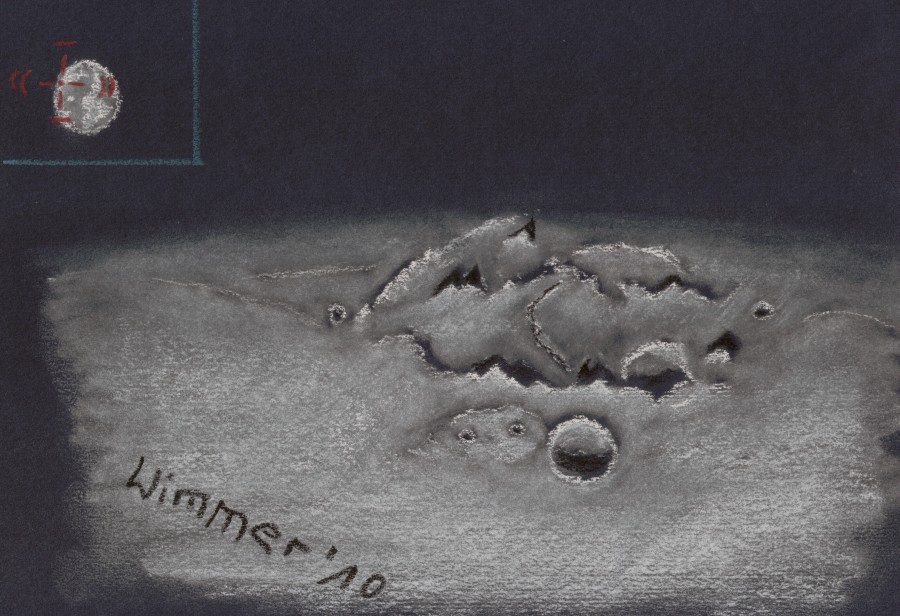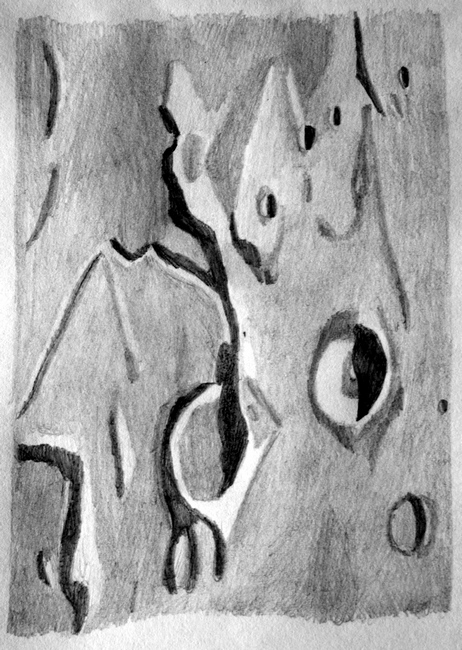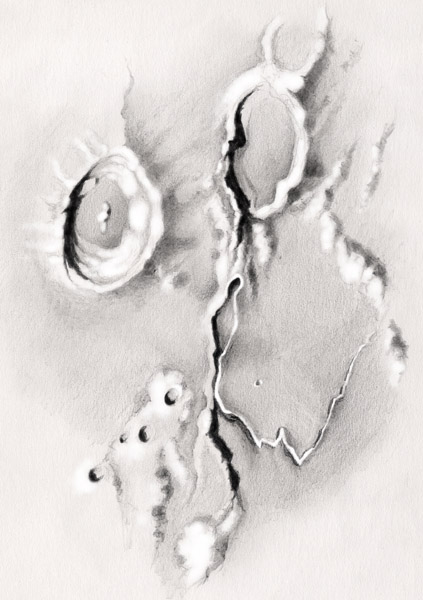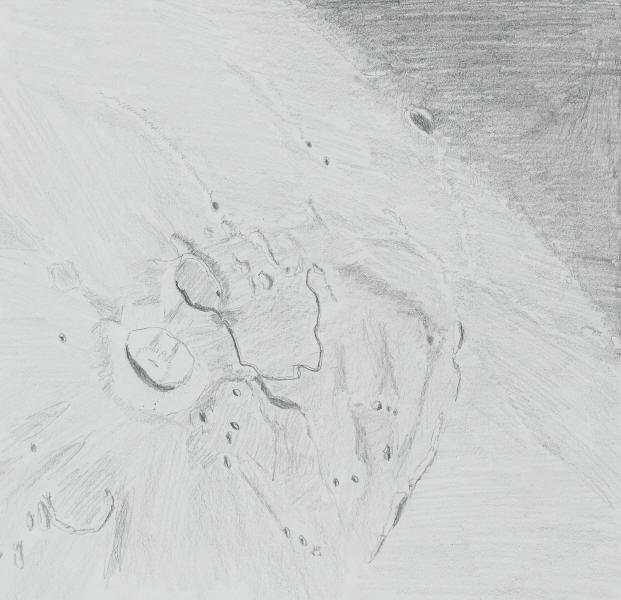
The Aristarchus plateau
Sketch and Details by Peter Mayhew
Hover cursor over sketch to view labels.
A lovely bright day 12 moon hung in the southern sky just before and after sunset. The terminator was just to the west of the Aristarchus plateau. Having saved and saved this for sketching for months, I gave in and did it. The clouds kept rolling across the moon interrupting me; first low thick stuff, and later high foggy stuff. But by 9.30pm I had got most of the visible features on paper. It wasn’t the best night for seeing, but was tolerable. The plateau is a volcanic shield about 200km square, in the North West of the Ocean of Storms. It breaks all sorts of lunar records; the brightest crater (Aristarchus), the longest sinuous rille (Vallis Schroteri), the most coloured spot “Wood’s spot” (the shield itself). Aristarchus itself appears bright white, especially the area to the east. Surrounding the ejecta slopes is a dark melt band, and then rays can be seen extending east, north and south. The crater itself has a central hill and a dark band surrounding that, as well as darker bands on the western crater wall. North-East is the ghost crater Prinz. Herodotus is an older, flooded crater, which seems on initial inspection to be the source of Schroter’s valley; the view is deceptive because of the notch in its northern wall and the dark surrounding land. The valley itself is sufficiently broad to distinguish either wall, and winds first north, then west and finally south, narrowing as it goes. The north-west of the shield is guarded by the long mountain chain Montes Agricola. Mons Herodotus lies to its south. The western area near the terminator is crossed by wrinkle ridges. The area is so complex that it was a real struggle to take in all the detail that was there: for this reason I’ve dubbed it the “shield of confusion”. I suspect another visit with better seeing conditions will bring out new features.
The sketch was graphite pencil on white paper, done at the eyepiece. Instrument: Skywatcher Skyliner 150mm f8 Dobsonian, 10mm e.p. plus x2 Barlow.
